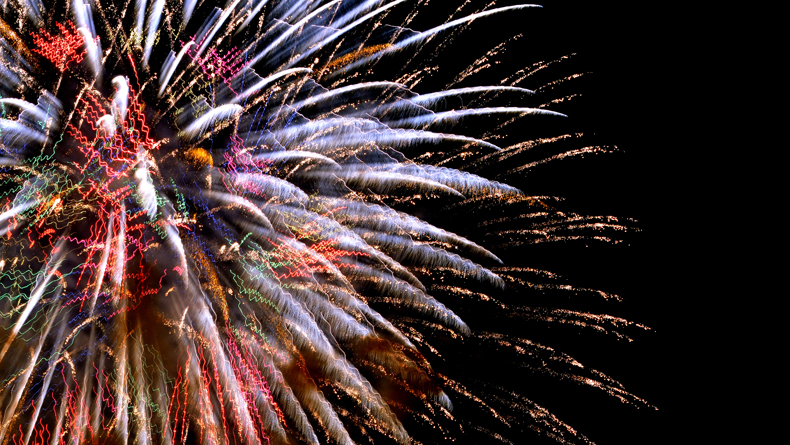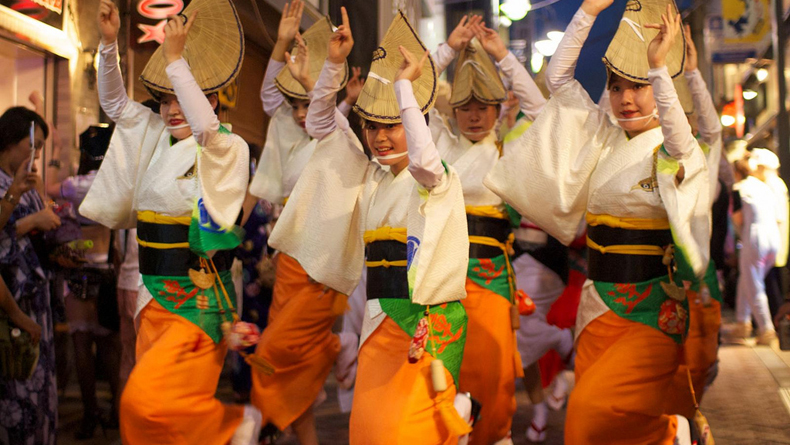Matsuri Madness: Summer 2013
Summer in Japan brings with it many good things to distract you from the heat—pineapple flavored chu-hi, kakigori (snow cones), and fireworks, just to name a few. Luckily, there is also the one event at which you can enjoy all three together: the matsuri!
July
Sawara Matsuri, Katori City, Chiba, July 12-14, 10 a.m.-10 p.m.
Getting there: Sawara Station, JR Narita Line
This 300 year-old biannual festival (held again in October) is one of Kanto’s major float festivals. Giant dolls, over four meters high and representing mythological Japanese warriors and heroes, adorn the floats and are wheeled through the streets of Katori. With these massive, almost garish, dolls, it does make you wonder at which point over the last three centuries the floats became the focus…
Mitama Matsuri, Yasukuni Shrine, Tokyo, July 13-16, 10 a.m.-10 p.m.
Check website here for daily times and activities.
Getting there: Ichigaya Station, JR Sobu Line; Iidabashi Station, JR Chuo Line and Yurakucho Subway Line; Kudanshita Station, Tozai, Hanzomon and Toei Shinjuku Subway Lines; Ichigaya Station, Namboku and Yurakucho Subway Lines
Held at the notorious Yasukuni Shrine, over 300,000 people flock to the Mitama matsuri (festival) to pay their respects to the spirits of deceased family and friends. More than 30,000 lanterns decorate 40-foot high walls that mark the shrine’s entrance, illuminating the night skies and, undoubtedly, the heavens. If visiting the Yasukuni shrine makes you uncomfortable, this matsuri gives you a positive reason to make the trip without its history and associations being a focus.
Hamaorisai Matsuri, Southern Beach, Chigasaki, Kanagawa, July 15, 5 a.m.
Getting there: Chigasaki Station, JR Tokaido Line
Around sunrise on the third Monday of July, a few hundred men and women gather on Southern Beach to begin the task of purifying 30 or so mikoshi (a divine palanquin that is basically viewed as a portable Shinto shrine) in the waves of the ocean. Yes it is an early start, but if you can get there the day before, do so and enjoy the beach with the family.
Sumidagawa Fireworks Festival, Taito-ku/Sumida-ku, Tokyo, July 27, 7:05 p.m.-8:30 p.m.
In the event of rain, this festival event will be postponed until the following day, weather permitting.
Getting there: Asakusa Station, Ginza Subway Line
Exploding over the Sumidagawa River, this incredible fireworks display is one of the most anticipated over the hanabi (fireworks) season, and dates back to 1732, when fireworks were first used in festivals. Nowadays, nearly a million of your closest friends will congregate to witness this hanabi spectacular as characters such as Doraemon and Hello Kitty, meaningful kanji and intricate patterns decorate the summer night sky. There are two viewing areas, and it is best to get there early in order to claim some space. Pack a hand fan too, as it can get quite warm, particularly when everyone is at a standstill, mesmerized by the dancing lights above them. Plenty of food and beverages are on offer from outdoor stalls, and these are great nights to get in amongst the cheer. Many Japanese will wear the traditional summer yukata, so why not do the same? At this time of year, local department stores have them in stock and you can outfit yourself (and your family, friends and neighbors, if you so wish) for a very reasonable price.
August
Asagaya Tanabata Matsuri, Asagaya Pearl Center Shopping Street, Asagaya, Tokyo, August 7-11
Getting there: Asagaya Station, JR Chuo Line
Literally translated as “evening of the seventh,” tanabata is a star festival with some very sweet and family-friendly activities associated with it. The original intent of tanabata was to honor deities, represented by the stars Vega and Altair, meeting once a year (separated by the Milky Way for the rest of the time). Yet nowadays, people commemorate this festival by writing hopes and wishes on small pieces of paper, which are then hung from bamboo or a wish tree. The next day, the bamboo or wish tree is either set afloat on a river or burned.
For 60 years, Asagaya has held its own unique tanabata matsuri, with interesting papier-mâché decorations hanging from the Pear Center Shopping Street. While you can enjoy the tanabata decorations all day long, it’s best to go after dusk, when the festival atmosphere really takes hold, and check out the food and souvenir stalls as well.
Tokyo Bay Grand Fireworks Festival, Tokyo, August 10, 7 p.m.-8:30 p.m.,
Getting there: Hamamatsucho Station, JR Yamanote Line; Toyosu Station, Yurakucho Subway Line; Kachidoki Station, Toei Oedo Subway Line
This is one night the Tokyo skyline truly comes alive. Rainbow Bridge and its surrounds prove to be a stunning backdrop for this incredible explosive display. Over 80 minutes, around 12,000 shells are launched from barges in Tokyo Bay. Although Harumi Wharf, the main festival site, requires you to pre-purchase tickets for access (see website here, Japanese only), there are a number of great free viewing points around Harumi, Toyosu and Odaiba. Not surprisingly, you must get there early to stake your claim, and as with most firework displays, many people don the yukata to add to that summer festival atmosphere.
Sumida River Toro Nagashi, Asakusa, Tokyo, August 13, from 6:30 p.m.
Getting there: Asakusa Station, Ginza Subway Line
Taking part in the customs of Obon, on this evening around 3,000 Japanese people will float lit chōchin (paper lanterns) down the Sumida River. It is believed the chōchin will help guide the spirits of loved ones who have died over the past year, to the afterlife. Watch from Azuma Bridge as the river warmly glows underneath the lanterns gently moving with the current. For ¥1,500 you too can send a lantern on its way and perhaps remember someone special from your life who is no longer here. It is a beautiful and touching ceremony to witness.
Harajuku Omotesando Genki Matsuri Super Yosakoi, Tokyo, August 24-25, 10 a.m.-8 p.m. and 10 a.m.-5 p.m.
Getting there: Harajuku Station, JR Yamanote Line; Meiji-Jingumae Station, Chiyoda and Fukutoshin Subway Lines; Omotesando Station, Chiyoda, Ginza and Hanzomon Subway Lines.
Yosakoi, a traditional Japanese summer dance, had its humble beginnings in Kochi, Shikoku in 1954, and quickly gained popularity across Japan. Today, the summer season sees a myriad of matsuri all over the country dedicated to this dance.
As you can imagine, taking anything traditional and dropping it into the center of Japanese pop culture, is going to have some amazing results. The Super Yosakoi does not disappoint. Over the festival’s two days, around 90 dance teams, dressed in a mish mash of modern and conventional threads, take part in the parade. This also sees them competing against each other, keeping time to the naruko, an old clapper the people of Koichi used to scare birds from their fields. A great outing for the family, kids love the color of this event, but given its central and already popular location, expect some massive crowds. Over 800,000 attended last year.
Koenji Awa Odori, Koenji, Tokyo, August 24-25, 5 p.m.-8 p.m.
Getting there: Koenji Station, JR Chuo Line
Koenji’s annual awa dance, Awaodori, is one of Tokyo’s most vibrant and liveliest festivals. Dating back to 16th-century Tokushima, Shikoku, it’s believed that upon completion of the local castle, the region’s feudal lord plied his people with alcohol to rejoice—and rejoice they did! We’ve all seen what booze does to the average quiet and reserved salaryman at an end-of-year bonenkai (party). Well by boozing up an entire city, this lord got his party and more—an outbreak of dance across the region! How this came to be linked to Koenji, I am not sure, but the Awaodori has been celebrated for over 50 years and is well worth putting on the calendar.
Asakusa Samba Carnival, Central Asakusa, Tokyo, August 31, from 1:30 p.m.
Getting there: Asakusa Station, Ginza and Toei Asakusa Subway Lines; Tawaramachi Station, Ginza Subway Line
Send of summer with some samba! With its near-naked dancers, glittery costumes, and a hell of a lot of people—over 500,000 in fact—you could be mistaken for thinking you’ve somehow found yourself at Rio’s Carnival. Started in 1980 as a way of boosting the area’s popularity to draw in tourists, the Asakusa Samba Carnival is clearly about all things samba. Combining a samba competition, which brings in samba dance troupes from all around the world, with a colorful and glitzy parade, means that there are some serious moves and incredible costumes on display. The parade begins at 1:30 p.m., and runs east to west along Kaminarimon-dori, from Senso-ji Temple to Tawaramachi Station.
Photos: Featured and Harajuku Omotesando Genki Matsuri by Yamamomo Kobo; fireworks by Ajari; Koenji Awa Odori by Midorisyu; Akasaka Samba Carnival by Toshihiro Oimatsu

















Leave a Reply